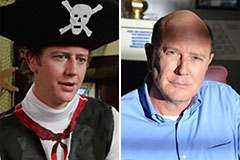When it comes to getting the most out of your outboard motor, picking the correct propeller is paramount. A poorly matched propeller can lead to sluggish acceleration, reduced top speed, and poor fuel economy. Propellers come in various sizes, pitches, and types. To achieve your motor's performance, it's crucial to consider the specific requirements of your boat, engine, and intended use.
- Figure out your boat's weight and displacement.
- Evaluate your desired speed and acceleration.
- Consult your motor's manufacturer recommendations for propeller size and pitch.
- Experiment different propellers to find the best fit.
By meticulously selecting a propeller that is appropriate for your needs, you can unlock your outboard motor's full potential and enjoy smoother, more efficient boating experiences.
Outboard Engine Maintenance: Keeping Your Watercraft Running Smoothly
Proper upkeep of your outboard engine is crucial for ensuring smooth and reliable performance on the water. A well-maintained engine will provide you with years of trouble-free boating, while neglecting it can lead to costly repairs and downtime.
Regularly checking your engine's key components, such as the fuel system, spark plugs, and cooling system, is paramount. , Furthermore, changing the oil and filter regularly according to your engine's manufacturer recommendations will help keep things running smoothly. Don't forget to grease any moving parts and examine belts and hoses for signs of wear and tear.
By adhering to a consistent maintenance schedule, you can enhance the life of your outboard engine and enjoy many safe and enjoyable days on the water.
Critical Outboard Motor Parts for Peak Performance
To ensure your outboard motor runs at its absolute best, it's crucial to pay attention to several parts. A well-maintained drive shaft is essential for efficient power transmission and smooth operation. The ignition system plays a critical role in igniting the fuel mixture, making sure it's in optimal condition is paramount.
Don't overlook the carburetor. This part delivers the fuel to the engine, and any malfunctions can significantly impact performance. Regularly inspect and service your water separators to prevent dirt from clogging vital components.
Finally, a clean and well-lubricated water pump is essential for reducing engine overheating.
Tapping into Power: Outboard Engine Performance Upgrades
Boost your craft's performance and conquer the water with strategic outboard engine upgrades. Whether you crave greater speed, improved fuel Mercury outboard engines efficiency, or simply want to optimize your motor's potential, a range of modifications can rejuvenate your outboardunitsetup
Consult with a qualified marine mechanic to assess the best upgrades for your specific motor type and boating needs. Remember, safety always comes first, so ensure all modifications are installed correctly by a professional.
Navigate with Confidence: Choosing the Right Outboard Accessories
Equipping your outboard motor with the proper accessories can substantially enhance your boating experience. From vital safety gear to performance-boosting options, there's a variety of choices to consider. When selecting accessories, emphasize items that cater your specific needs and boating style.
- Start by determining the type of activities you'll be involved in. {Fishing|,Trolling, or watersports? Each endeavor may require distinct accessories.
- Next, explore the capabilities of various accessories to find the best alignment for your outboard motor and boat.
- , Lastly, seek advice from experienced boaters or marine professionals for insights based on their knowledge and expertise.
By carefully selecting the right outboard accessories, you can enhance your time on the water, ensuring a safe and enjoyable experience.
Diagnosing Common Outboard Motor Problems
Keeping your outboard motor running smoothly requires regular maintenance and a keen eye for potential issues. When things start to go awry, it's important to be able to figure out the root of the problem quickly. One common issue is a shortage of oomph. This could stem from a variety of factors, such as fouled fuel lines, a faulty spark plug, or a damaged starter motor. Another frequent complaint is a hard time starting. This could be due to worn battery connections, dirty fuel, or a problem with the ignition system.
In order to get your motor back again, it's helpful to conduct some basic checks. First, look over the engine for any patent damage or loose connections. Next, test the fuel lines and spark plugs. If everything looks good, it's time to advance to more in-depth troubleshooting.
A handy tool for outboard motor service is a multimeter, which can help you isolate electrical problems. Remember, if you're unsure about any aspect of the repair process, it's always best to consult a qualified mechanic.
 Judge Reinhold Then & Now!
Judge Reinhold Then & Now! Ashley Johnson Then & Now!
Ashley Johnson Then & Now! Hailie Jade Scott Mathers Then & Now!
Hailie Jade Scott Mathers Then & Now! Rachael Leigh Cook Then & Now!
Rachael Leigh Cook Then & Now! Nicki Minaj Then & Now!
Nicki Minaj Then & Now!